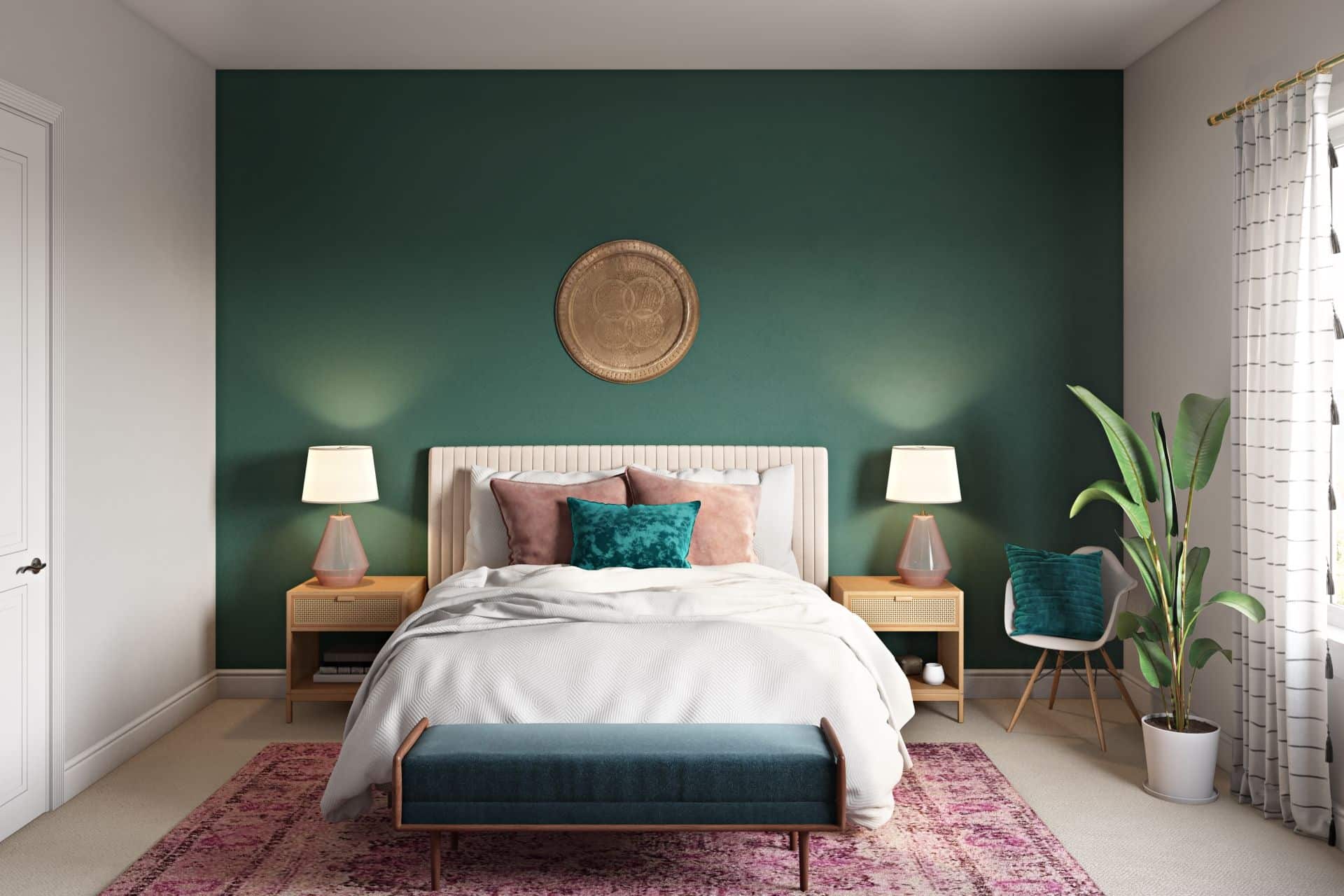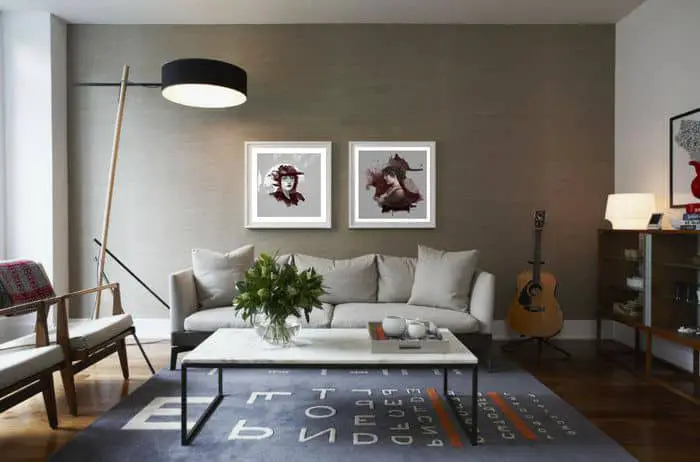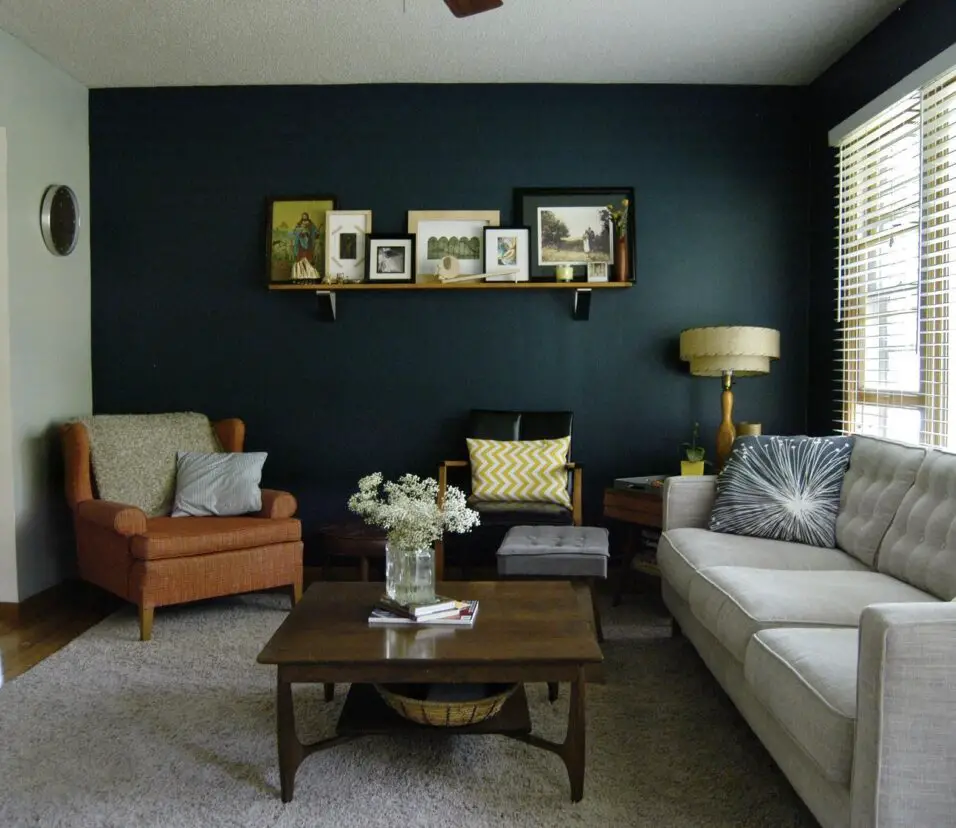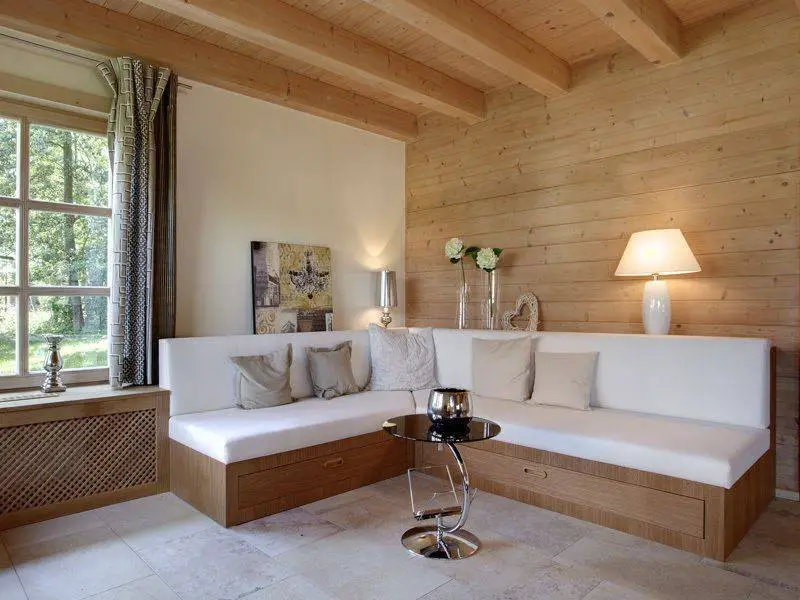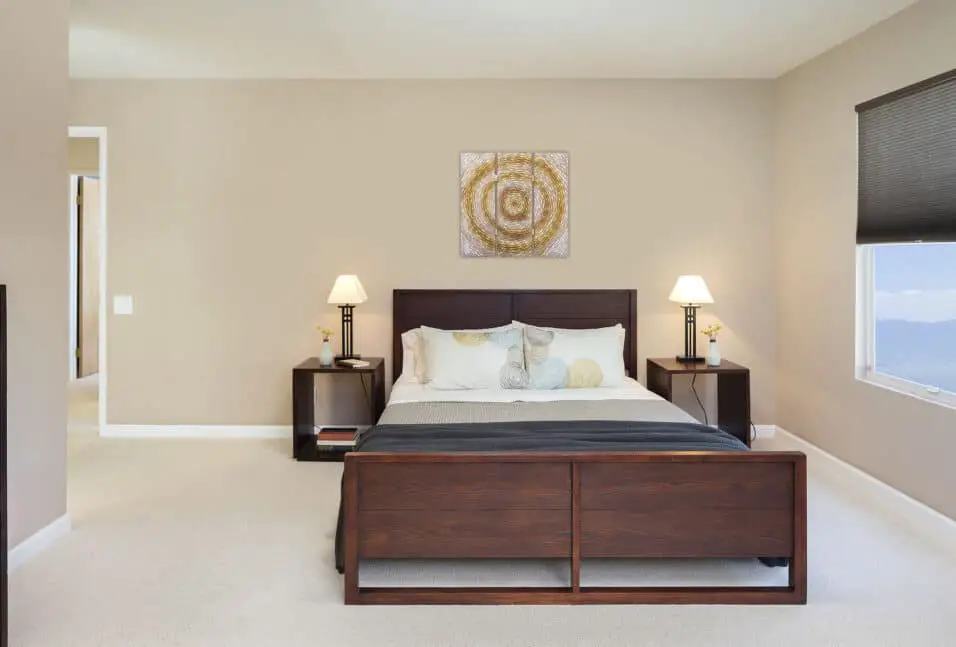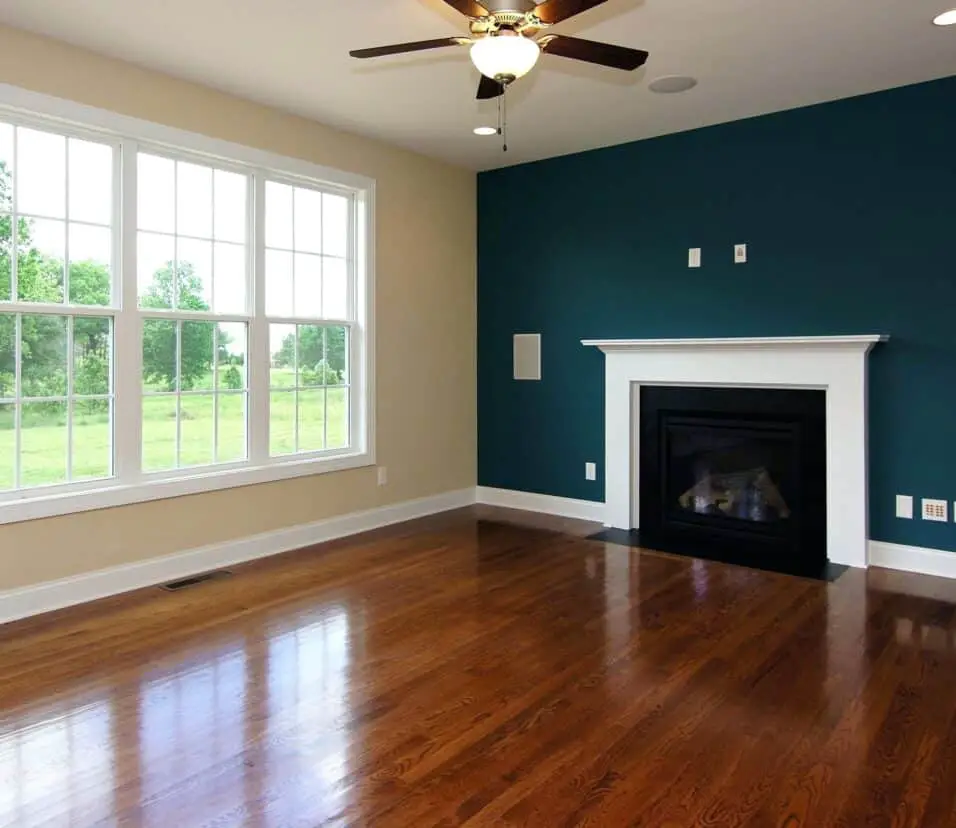How To Choose An Accent Wall
Introduction
How To Choose An Accent Wall: Choosing an accent wall can be a daunting task, especially with the myriad of options available. An accent wall is a great way to add visual interest and personality to a room, making it a focal point that draws attention and enhances the overall aesthetic. Whether you are looking to create a bold statement or add a subtle touch of color, selecting the perfect accent wall can transform the entire ambiance of your space.
An accent wall serves as a powerful design element that can instantly elevate the style and atmosphere of any room. It allows you to experiment with different colors, patterns, and textures without overwhelming the entire space. By strategically choosing a wall to highlight, you can create a sense of depth and dimension, making the room feel larger or cozier depending on your desired effect. Additionally, an accent wall can be used to showcase artwork, photographs, or other decorative pieces, adding a personal touch and creating a focal point that captures attention.
When selecting an accent wall, there are several factors to consider to ensure you make the right choice for your space. Firstly, think about the purpose of the room and the mood you want to create. Are you looking for a vibrant and energetic atmosphere, or do you prefer a calm and soothing environment? The color and pattern of the accent wall should align with the overall theme and purpose of the room.
Another important consideration is the natural lighting in the room. Take note of how much natural light the wall receives throughout the day, as this can greatly impact the appearance of the color. A well-lit wall can handle bolder and darker colors, while a wall with limited natural light may benefit from lighter shades to avoid feeling closed off or gloomy.
Choosing an accent wall is an exciting opportunity to infuse your personal style into your living space. By considering factors such as the purpose of the room, the desired mood, and the lighting conditions, you can select the perfect accent wall that enhances the overall aesthetic and creates a visually captivating environment. So, go ahead and unleash your creativity to transform your room into a stunning masterpiece with a well-chosen accent wall.
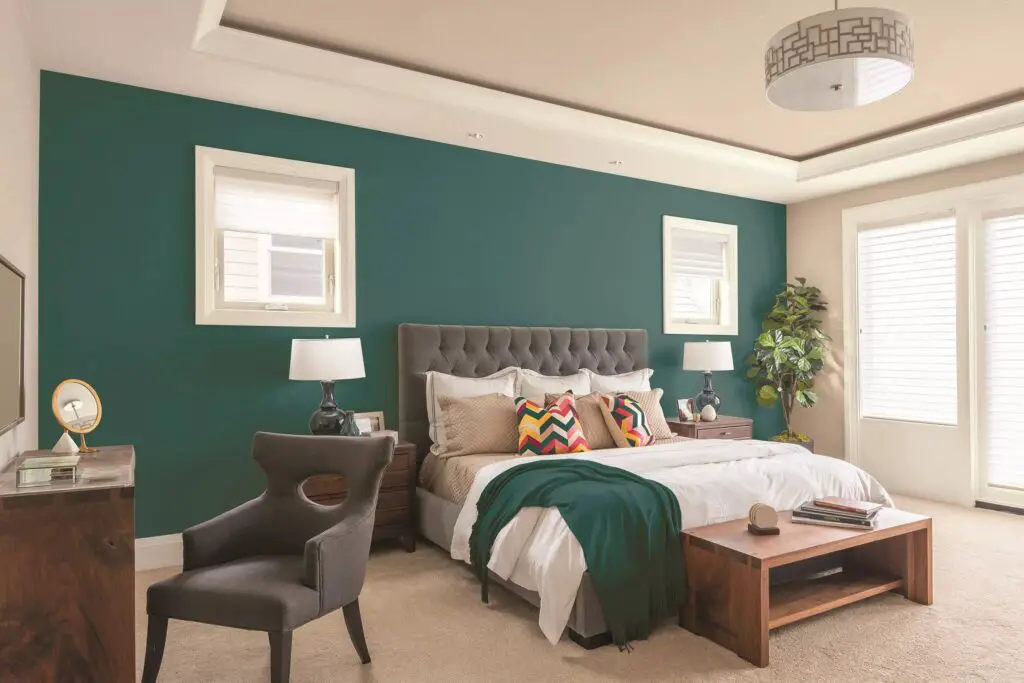
What is the rule for accent walls?
Go with a color that is darker than the other walls in the room. A darker hue will contrast with the lighter walls and pull eyes straight to it, which is what you want. A good rule of thumb is to paint the accent wall the same color as the other walls, but 2 shades darker.
An accent wall is a popular interior design technique that involves painting or decorating one wall in a room differently from the others. This technique is used to create a focal point, add visual interest, and enhance the overall aesthetic appeal of a space. Accent walls can be created using various materials, colors, patterns, and textures, depending on the desired effect and the style of the room.
One of the main rules for accent walls is to choose the right wall to highlight. Typically, the wall that is directly opposite the entrance or the wall behind the main furniture piece. Such as a bed or a sofa, is selected as the accent wall. This placement ensures that the accent wall immediately catches the attention of anyone entering the room and becomes the focal point of the space. It also helps to create a sense of balance and harmony within the room.
When it comes to selecting the color for an accent wall, there are a few guidelines to consider. The color should complement the overall color scheme of the room while also providing a contrast to the other walls. This contrast can be achieved by choosing a darker or brighter shade of the same color or by selecting a completely different color that harmonizes with the existing palette. Bold and vibrant colors are often used for accent walls to create a dramatic effect. While softer and more muted tones can be chosen for a subtle and sophisticated look.
In addition to color, patterns and textures can also be used to create an accent wall. Wallpaper, stencils, or textured paint can be applied to the chosen wall to add visual interest and depth. These elements can introduce patterns, such as stripes, geometric shapes, or floral motifs. Which can further enhance the overall design scheme of the room. It is important to ensure that the patterns and textures chosen for the accent wall complement the existing decor and do not overwhelm the space.
Overall, the rule for accent walls is to create a visually appealing focal point that enhances the overall design of a room. By carefully selecting the right wall, color, and decorative elements. An accent wall can transform a space and add a touch of personality and style. Whether it is through bold colors, intricate patterns, or textured finishes. Accent walls offer endless possibilities for creativity and can truly elevate the aesthetic appeal of any room.
How do I choose the best accent wall?
Guide To Choosing The Perfect Accent Wall Colours
- Create a Focal Point.
- Select A Shade within Your Colour Palette.
- Consider Lighter Colours for Accent Wall.
- Show Off Your Personal Style.
- Accent Wall with Monochromatic Colour.
- Accent Wall with Complimentary Colour.
- Accent Wall Colour with Neutral Tones.
Introduction:
Choosing the best accent wall can greatly enhance the overall aesthetic appeal of a room. An accent wall serves as a focal point, adding depth and visual interest to the space. However, with numerous options available. It can be overwhelming to decide which accent wall will work best for your specific needs and preferences. In this article, we will explore some key factors to consider when choosing the perfect accent wall for your space.
Consider the room’s purpose and style:
Before selecting an accent wall, it is essential to consider the room’s purpose and style. Different rooms have different functions, and the accent wall should complement the overall theme of the space. For example, in a living room, you may want to create a cozy and inviting atmosphere. While in a home office, you might prefer a more energizing and stimulating ambiance. Understanding the purpose of the room will help you determine the color, pattern, or texture that will best suit your needs.
Choose the right color:
The color of the accent wall plays a crucial role in creating the desired effect. Bold and vibrant colors can make a statement and add drama to the room. While softer and more neutral tones can create a calming and soothing atmosphere. Consider the existing color scheme of the room and choose a color that complements or contrasts with the other walls and furnishings. Additionally, take into account the natural lighting in the room, as it can affect how the color appears. It is also worth noting that darker colors tend to make a room feel smaller. While lighter shades can create an illusion of space.
Experiment with patterns and textures:
Adding patterns or textures to an accent wall can bring a unique and dynamic element to the room. Whether it’s a geometric pattern, a textured wallpaper, or a faux finish, incorporating these elements can create visual interest and depth. However, it is important to strike a balance and not overwhelm the space. If the room already has bold patterns or textures in other areas. Iit may be best to opt for a more subtle accent wall to avoid a cluttered look.
Consider the focal point:
An accent wall should draw attention to a specific area or feature in the room. Identify the focal point of the space, such as a fireplace. A piece of artwork, or a large window, and choose the wall that will enhance and highlight that feature. By doing so, you can create a cohesive and harmonious design that showcases the room’s best attributes.
By considering the room’s purpose and style, choosing the right color. Experimenting with patterns and textures, and considering the focal point. You can confidently select the best accent wall for your space. Remember, the goal is to create a visually appealing and harmonious environment that reflects your personal style and enhances the overall ambiance of the room.
Which wall should be the feature wall?
The wall you choose to highlight should ideally be the space to which your eye is first drawn when you enter the room.
Factors to consider:
One of the primary factors to consider when choosing a feature wall is the room’s layout. The wall that naturally catches the eye upon entering the room or the one that serves as a backdrop for key furniture pieces can be an ideal choice. Additionally, architectural features such as a fireplace. Large windows, or unique wall textures can also influence the selection of the feature wall. These elements can be highlighted by choosing the wall that complements or contrasts with them, creating a visually striking effect.
Personal preferences:
Personal preferences play a crucial role in determining the feature wall. The wall that resonates with the homeowner’s style, color preferences, or desired ambiance should be given priority. It could be a wall that showcases a favorite artwork. A collection of photographs, or a vibrant color that adds a pop of personality to the room. By selecting a wall that aligns with personal preferences. The feature wall becomes a reflection of the homeowner’s taste and creates a sense of connection and comfort.
Choosing the right feature wall involves considering various factors such as room layout, architectural features, and personal preferences. By carefully analyzing these aspects, one can identify the wall that stands out and enhances the overall aesthetic appeal of the room. Whether it’s through highlighting architectural elements or reflecting personal style. The feature wall becomes a captivating focal point that elevates the interior design of the space.
How many accent walls should you have in a room?
DO Pick the Right Wall. When it comes to accent walls, only one wall gets to be the accent wall. If you were to pick more than one, then it wouldn’t have the same effect and you may as well paint the entire room. Because only one wall gets to be the accent wall, you must choose wisely.
When it comes to interior design, accent walls have become a popular trend in recent years. They can add depth, visual interest, and a focal point to a room. However, it is important to consider the number of accent walls you should have in a room to maintain balance and harmony in your overall design. While there is no hard and fast rule, several factors should be taken into account to determine the ideal number of accent walls for your space.
Firstly, it is essential to consider the size and layout of the room. If you have a small room, having multiple accent walls can make the space feel overwhelming and cluttered. In such cases, it is generally recommended to limit the number of accent walls to one or two. This will allow the wall(s) to stand out and create a focal point without overpowering the room. On the other hand, if you have a larger room with an open floor plan. You may have more flexibility in incorporating additional accent walls.
Secondly, the purpose and function of the room should also be taken into consideration. Different rooms serve different purposes, and the number of accent walls can vary accordingly. For example, in a bedroom, having one accent wall behind the bed can create a cozy and intimate atmosphere. In a living room, one or two accent walls can help define seating areas or highlight architectural features. However, in a dining room or home office, having too many accent walls can be distracting and take away from the main focus of the space.
Thirdly, the color and pattern of the accent walls play a crucial role in determining the number. Bold and vibrant colors or intricate patterns can be visually stimulating and may require fewer accent walls to make an impact. On the other hand, if you opt for more subtle or neutral colors. You might consider incorporating additional accent walls to add interest and depth to the room.
Lastly, personal preference and style should not be overlooked. Ultimately, the number of accent walls you choose should align with your personal taste and the overall aesthetic you want to achieve. Some individuals prefer a more minimalist approach with only one accent wall. While others may enjoy a more eclectic look with multiple accent walls throughout the room.
The number of accent walls you should have in a room depends on various factors such as the size and layout of the space, the purpose of the room. The color and pattern of the walls, and personal preference. By considering these factors and finding the right balance. You can create a visually appealing and harmonious design that enhances the overall ambiance of your room.
What accent wall makes room look bigger?
A dark purple, brown, burgundy or navy blue can also work against a soft white or cream to help trick the eye into making the space feel bigger. ‘Just make sure you reflect it across the rest of the room with a complimentary color on the walls and ceiling,’ says Tash Bradley of Lick.
Introduction:
When it comes to interior design, accent walls have become a popular choice for homeowners looking to add visual interest and depth to their rooms. Not only do accent walls serve as a focal point. But they can also create the illusion of a larger space. Choosing the right accent wall color or design can make a significant difference in how spacious a room appears. In this article, we will explore various accent wall options that can make a room look bigger.
Color Selection:
One of the most effective ways to make a room look bigger is by choosing the right color for the accent wall. Lighter colors, such as whites, creams, and pastels, tend to reflect more light and create an airy and open feel. These colors can make walls recede visually, giving the impression of a larger space. On the other hand, darker colors can make a room feel more intimate and cozy, but they may also make it appear smaller. Therefore, it is advisable to opt for lighter shades when aiming to create the illusion of a bigger room.
Vertical Stripes:
Another technique to make a room look bigger is by incorporating vertical stripes on the accent wall. Vertical lines draw the eye upward, creating the illusion of higher ceilings and taller walls. This visual trick can make a room feel more spacious and open. When using vertical stripes, it is important to choose colors that complement the overall color scheme of the room. Opting for lighter shades for the stripes will enhance the effect of making the room appear larger.
Mirrors and Reflective Surfaces:
In addition to color and pattern, incorporating mirrors and reflective surfaces on the accent wall can also make a room look bigger. Mirrors have long been used in interior design to create the illusion of depth and space. Placing a large mirror on the accent wall can reflect light and make the room feel more expansive. Additionally, using reflective materials such as glass tiles or metallic wallpapers can also help bounce light around the room, making it appear larger and brighter.
Choosing the right accent wall can significantly impact the perceived size of a room. Lighter colors, vertical stripes, and the use of mirrors or reflective surfaces are all effective techniques to create the illusion of a larger space. By carefully considering these options and incorporating them into your interior design. You can transform a small or cramped room into a visually spacious and inviting area.
When selecting an accent wall, there are several factors to consider in order to make the right choice for your space. Firstly, you need to think about the purpose of the accent wall. Are you trying to create a focal point, add depth to the room, or highlight a specific architectural feature? Understanding the purpose will help you determine the best location for the accent wall.
Another important factor to consider is the color scheme of the room. The accent wall should complement the existing colors and enhance the overall aesthetic. Consider the mood you want to create in the space. For example, if you want to add warmth and coziness, you might opt for a rich, earthy tone. On the other hand, if you want to create a vibrant and energetic atmosphere, you could choose a bold and vibrant color.
Additionally, it’s crucial to consider the size and scale of the room. If you have a small space, a dark or intense color for the accent wall might make the room feel even smaller. In this case, it’s better to choose a lighter or softer color to create the illusion of more space. Conversely, in a large room, a bold and dramatic color can help create a sense of intimacy and coziness.
How can one determine the best location for an accent wall in a room?
Determining the best location for an accent wall in a room requires careful consideration of several factors. Firstly, it is important to assess the room’s layout and architectural features. Look for walls that naturally draw attention or have unique characteristics such as a fireplace. Large windows, or a prominent architectural detail. These areas often make excellent choices for accent walls as they can enhance and highlight the existing focal points of the room.
Another factor to consider is the purpose of the accent wall. Are you looking to create a visual focal point or add depth and dimension to the space? If you want to create a focal point, choose a wall that is directly visible upon entering the room or one that aligns with the room’s main seating area. This will immediately draw the eye and create a sense of visual interest. On the other hand, if you want to add depth and dimension. Consider selecting a wall that is perpendicular to the main entrance or one that is opposite a large window. This will create a sense of balance and make the room feel more spacious.
What are some popular color choices for accent walls and how do they impact the overall aesthetic?
When it comes to selecting colors for accent walls. There are several popular choices that can greatly impact the overall aesthetic of a space. One popular option is to choose a bold and vibrant color that contrasts with the surrounding walls. This can create a focal point in the room and add a sense of drama and energy. Colors like deep red, royal blue, or emerald green can make a strong statement and instantly draw attention to the accent wall.
On the other hand, some people prefer a more subtle approach and opt for a muted or neutral color for their accent wall. Shades like soft gray, beige, or pale pastels can create a calming and sophisticated atmosphere. These colors work well in minimalist or contemporary designs, allowing other elements in the room to take center stage. They provide a subtle contrast without overpowering the space.
It’s important to consider the overall color scheme and style of the room when choosing a color for an accent wall. If the room already has a dominant color, selecting a complementary shade for the accent wall can enhance the existing palette and create a cohesive look. Additionally, the impact of a color on the overall aesthetic can be influenced by factors such as lighting, furniture, and accessories in the room. Therefore, it’s crucial to test paint samples on the wall and observe how they interact with the surrounding elements before making a final decision.
Are there any specific patterns or textures that work well for accent walls?
When it comes to accent walls. The choice of patterns and textures can greatly impact the overall aesthetic of a space. There are several specific patterns and textures that work exceptionally well for accent walls, adding depth, visual interest, and personality to a room.
Geometric patterns are a popular choice for accent walls as they can create a modern and contemporary look. Whether it’s a bold chevron pattern or a subtle geometric design, these patterns can add a sense of structure and sophistication to a space. They can be particularly effective in rooms with minimalistic or monochromatic color schemes, as they provide a striking focal point.
Textured finishes are another fantastic option for accent walls. From exposed brick to reclaimed wood, textured finishes can bring a touch of warmth and character to a room. These finishes not only add visual interest but also create a tactile experience. Making the space feel more inviting and cozy. Additionally, textured accent walls can help to break up a large, plain wall, adding dimension and depth to the overall design.
How can an accent wall be used to enhance the overall design and atmosphere of a space?
An accent wall can be a powerful tool in enhancing the overall design and atmosphere of a space. By strategically selecting a wall to highlight, you can create a focal point that draws attention and adds visual interest to the room. This can be particularly effective in spaces that lack architectural features or have a monotonous color scheme. The accent wall can serve as a backdrop for showcasing artwork, furniture, or other decorative elements, elevating the overall aesthetic of the space.
Furthermore, an accent wall can also be used to create a specific atmosphere or mood in a room. The color choice for the accent wall plays a crucial role in this aspect. For example, bold and vibrant colors like deep red or electric blue can add a sense of energy and drama to a space, making it feel lively and dynamic. On the other hand, softer and muted tones such as pastel pink or light gray can create a calming and serene ambiance, perfect for bedrooms or relaxation areas.
When designing with an accent wall, it’s important to consider the overall balance and harmony of the space. The accent wall should complement the existing color scheme and style of the room, rather than overpowering it. Additionally, the placement of the accent wall is crucial in achieving the desired effect. It’s often recommended to choose a wall that naturally draws attention. Such as the one behind a fireplace or the wall opposite the entrance. By carefully considering these factors, an accent wall can truly enhance the overall design and atmosphere of a space, creating a visually stunning and inviting environment.
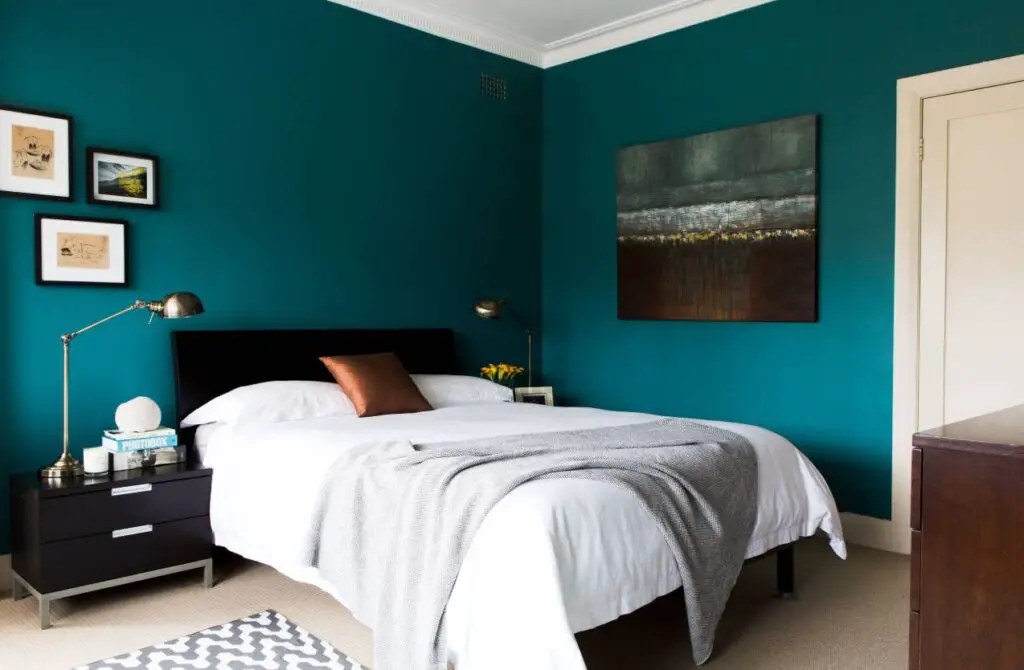
Conclusion
Choosing an accent wall can be a fun and creative way to add personality and style to any room. By following a few simple instructions, you can transform a plain and boring space into a visually stunning focal point. Whether you want to create a bold statement or add subtle depth to your room. An accent wall can be the perfect solution.
One important factor to consider when choosing an accent wall is the color scheme of the room. The accent wall should complement the existing colors and decor in the space. It can either be a shade that is already present in the room or a contrasting color that adds visual interest. By selecting a color that harmonizes with the overall design, you can create a cohesive and balanced look.
Another consideration is the location of the accent wall. Typically, the wall that is the most visually prominent or the one that draws the most attention is chosen as the accent wall. This could be the wall behind the bed in a bedroom. The wall facing the entrance in a living room, or the wall behind the dining table in a dining room. By selecting the right location, you can ensure that the accent wall becomes the focal point of the room.
When it comes to choosing the design or pattern for the accent wall colour, the options are endless. From bold geometric shapes to subtle textures, there are numerous ways to make a statement. Wallpaper, stencils, or even a hand-painted mural can be used to create a unique and personalized accent wall. It is important to consider the overall style and theme of the room when selecting the design, ensuring that it complements the existing decor.
Choosing an accent wall is a creative and exciting process that can transform the look and feel of any room. By considering the color scheme, location, and design, you can create a visually stunning focal point that adds personality and style to your space. Whether you opt for a bold and vibrant color or a subtle and textured pattern. An accent wall can elevate the overall aesthetic of your room. So, go ahead and unleash your creativity to choose the perfect accent wall that reflects your unique taste and enhances the ambiance of your living space.



